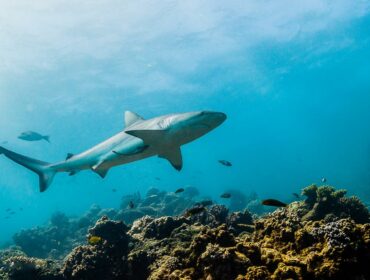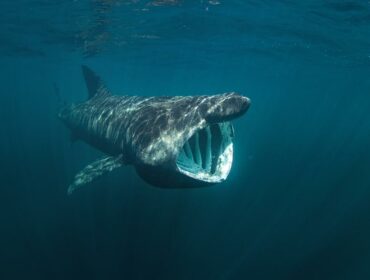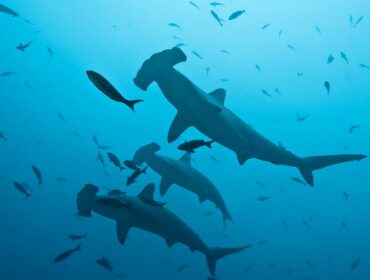When many people think of sharks, their minds immediately turn to the fearsome image of a great white with its enormous jaws full of razor-sharp teeth, but not all sharks are made up of the same terrifying physiology. The carpet shark is one of the more interesting species in the sea, with interesting patterns and propensity to inhabit shallow waters and reef bottoms lending to its name. This order, called Orectolobiformes, is comprised of 7 different families, each who share a few similarities with the others, but have their own distinctions as well.
What is a carpet shark?
Carpet sharks, scientifically known as Orectolobiformes, are a diverse group of sharks characterized by their unique body shape and distinctive skin patterns. They belong to the order of elasmobranchs, which also includes rays and skates.
Carpet sharks have flattened bodies with broad heads and large pectoral fins. They typically inhabit shallow, coastal waters in tropical and subtropical regions worldwide. These sharks are known for their fascinating camouflage patterns that resemble carpets, hence their name. Carpet sharks are generally non-aggressive and feed on a variety of prey, including small fish, crustaceans, and mollusks. They play an important ecological role as both predators and scavengers in their marine ecosystems.
Why are they called carpet sharks?
Carpet sharks are named for their unique skin patterns that resemble intricately woven carpets. These patterns often consist of a mix of spots, stripes, and patches that mimic the ornate designs found in carpets. This camouflage helps carpet sharks blend into their sandy or rocky habitats, making them difficult for predators and prey to spot. Additionally, the carpet-like appearance also aids in their ambush hunting strategy, allowing them to lie in wait for unsuspecting prey. The name “carpet sharks” perfectly captures the remarkable resemblance these fascinating creatures have to the intricate patterns found on carpets.
7 Carpet Shark Families
Blind Shark
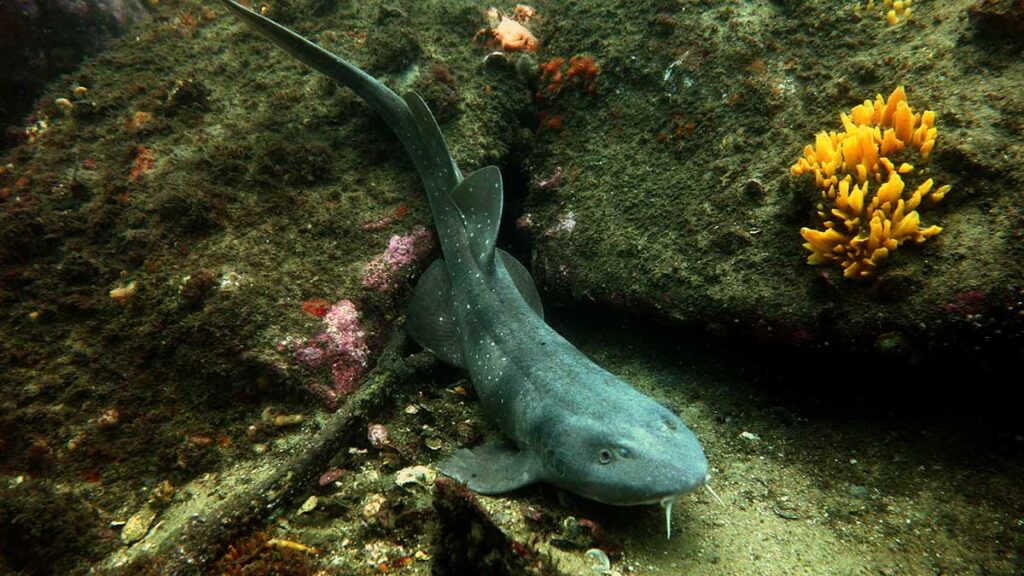
Two species of blind sharks make up the family of Brachaeluridae, which are native to the shallow reef areas of the eastern coast of Australia, but can also be found as much as 110 meters deep. Like the entire of order of carpet sharks, blind sharks have the characteristic barbels on either side of their flat, downward-turned mouths. Although they actually can see, they were dubbed blind sharks for their propensity to have their eyes closed when fishermen caught them. Blind sharks are ovoviviparous, meaning the mother keeps the eggs of her young inside her body until they hatch, where they feed off the yolk as they grow.
Nurse Shark
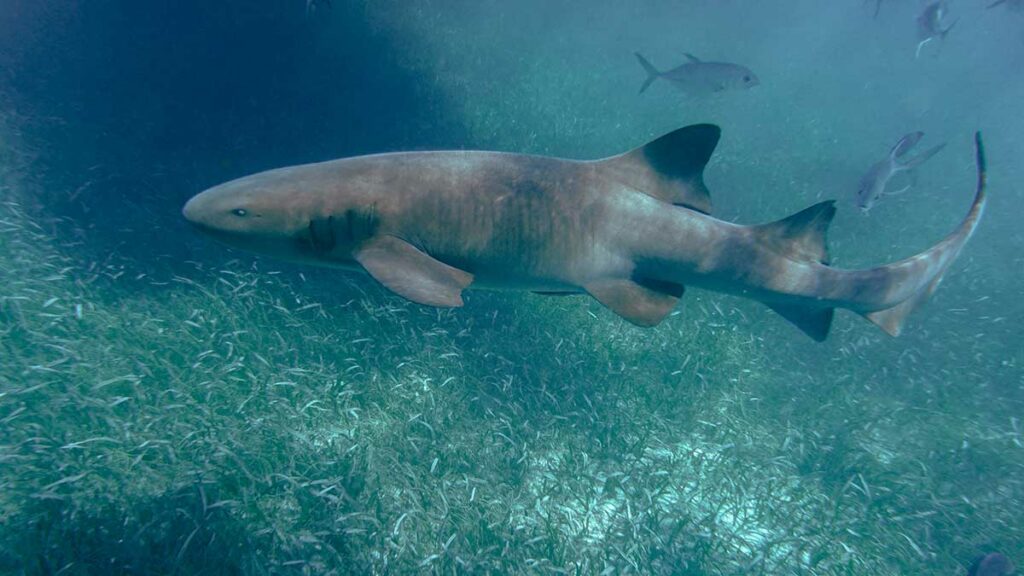
Nurse sharks are some of the more common sharks seen on a reef dive, typically found lounging on the sea bed under an overhang or some other type of protective shelter. Although they are recognized as being a docile species, they can and will lash out at divers who harass them, so follow the golden rule of diving and let them be! The mouth of the nurse shark is located between the eyes and snout, which is perfect for bottom-feeding on crustaceans, mollusks, dormant fish, and stingrays. Nurse sharks are also ovoviviparous, with a gestation period of 6 months that culminates in the birth of 30-40 shark pups at one time.
Bamboo Shark
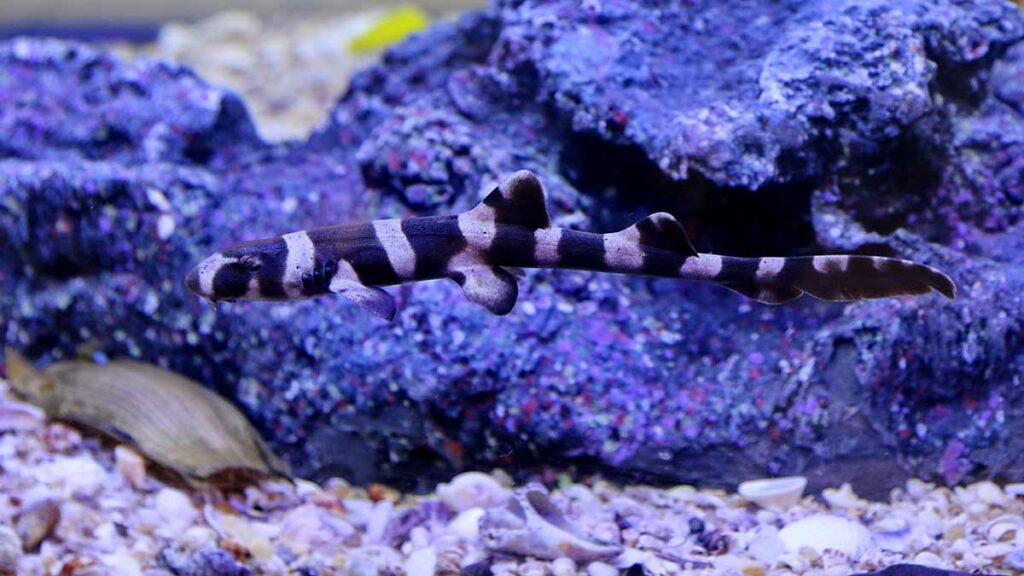
The bamboo shark is also known as a longtail carpet shark, so called for its particularly long tail that exceeds the length of the rest of the body. They too have the ubiquitous barbels around the mouth that distinguish the carpet shark order, with one species of this family displaying a dark hood or large black spots on the body, while the other only displays these markings as a juvenile. The pectoral and pelvic fins of the bamboo shark species are either thick and muscular or thin and weak, but both species are bottom dwellers, feeding on invertebrates and crustaceans.
Wobbegong
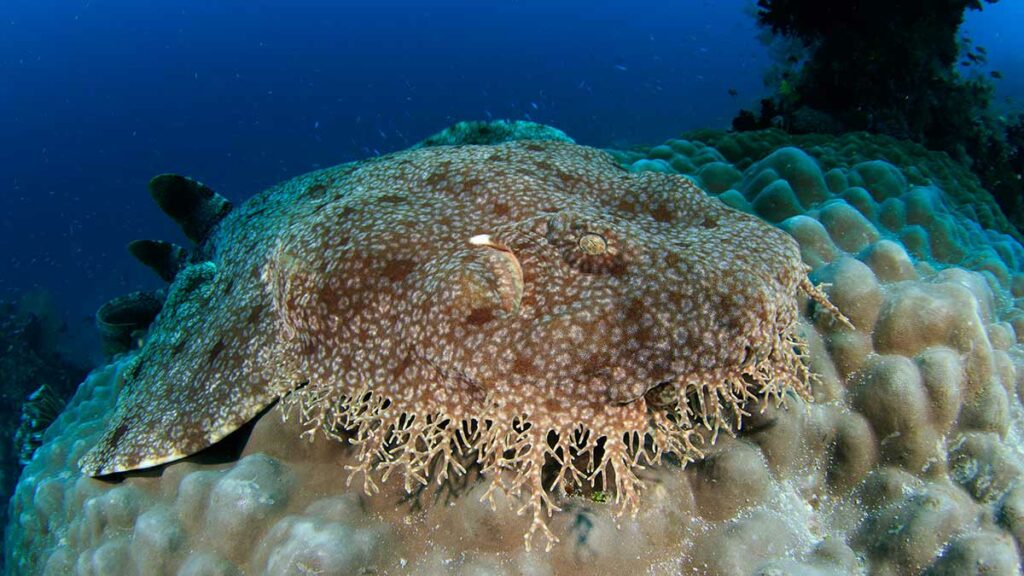
The wobbegong is perhaps the most visually stunning family of carpet sharks, as it is distinctive among the order for its symmetrical patterns and fringed appendages around the edges of the mouth. The word wobbegong is believed to be Australian Aboriginal in origin, meaning “shaggy beard,” which certainly fits the bill here! Wobbegongs generally pose no threat to divers, but have been known to attack divers who accidentally step on them due to their highly effective camouflage on the sea bed. It has been reported that the wobbegong is a difficult animal to remove once it bites, so keep a keen eye on the ocean floor in tropical regions of the western Pacific and eastern Indian Oceans.
Collared Carpet Shark
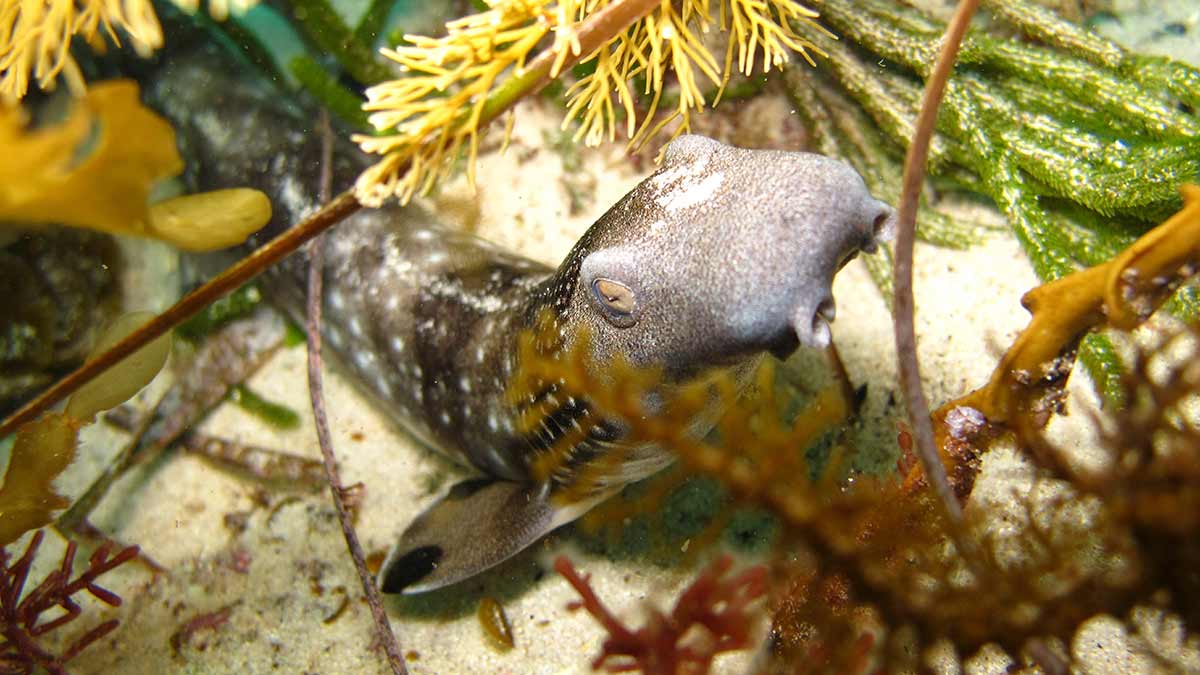
Found solely in the shallow waters of the western Pacific Ocean, the collared carpet shark is a small, slender shark with distinctive cat-like eyes and spotted bodies, sometimes with a dark band on the head just behind the eyes. They grow to be no larger than about 3 feet in length, and feed on fish and small invertebrates close to the sea floor.
Whale Shark
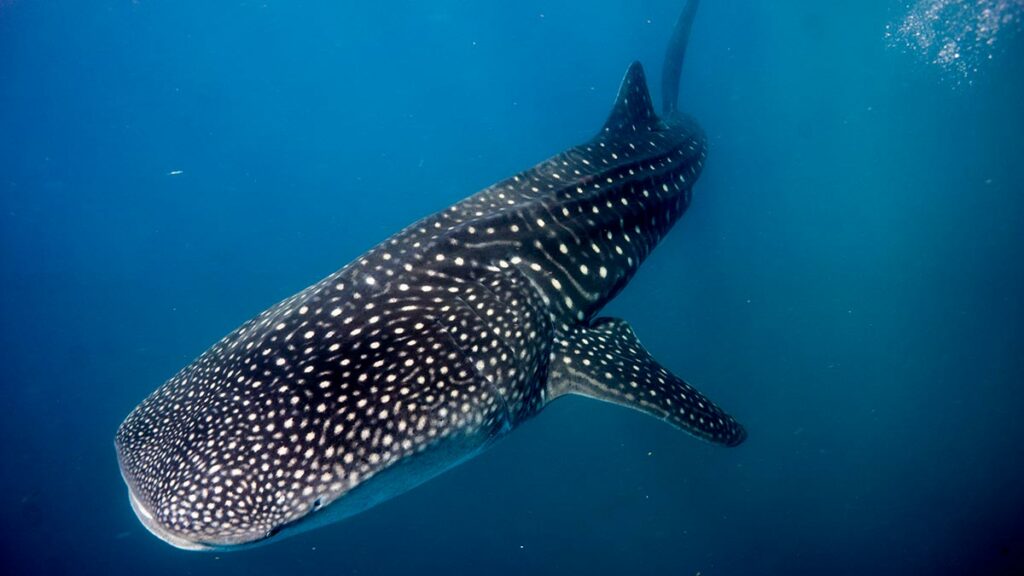
The whale shark is the largest fish in the whole of the world’s oceans, but despite this, it shares many of the physical characteristics of its carpet shark cousins. Its dark blue-grey skin is dotted with white, starry spots, and its small, wide-set eyes are found on either side of its enormous mouth. Whale sharks are filter-feeders, dining on plankton, small fishes, and even the eggs and sperm of spawning fish shoals. They pose virtually zero threat to divers, and are actually quite curious about humans themselves, often coming right up to boats to have a look or beg for a treat. How whale sharks mate and reproduce is still a complete mystery to science.
Zebra Shark
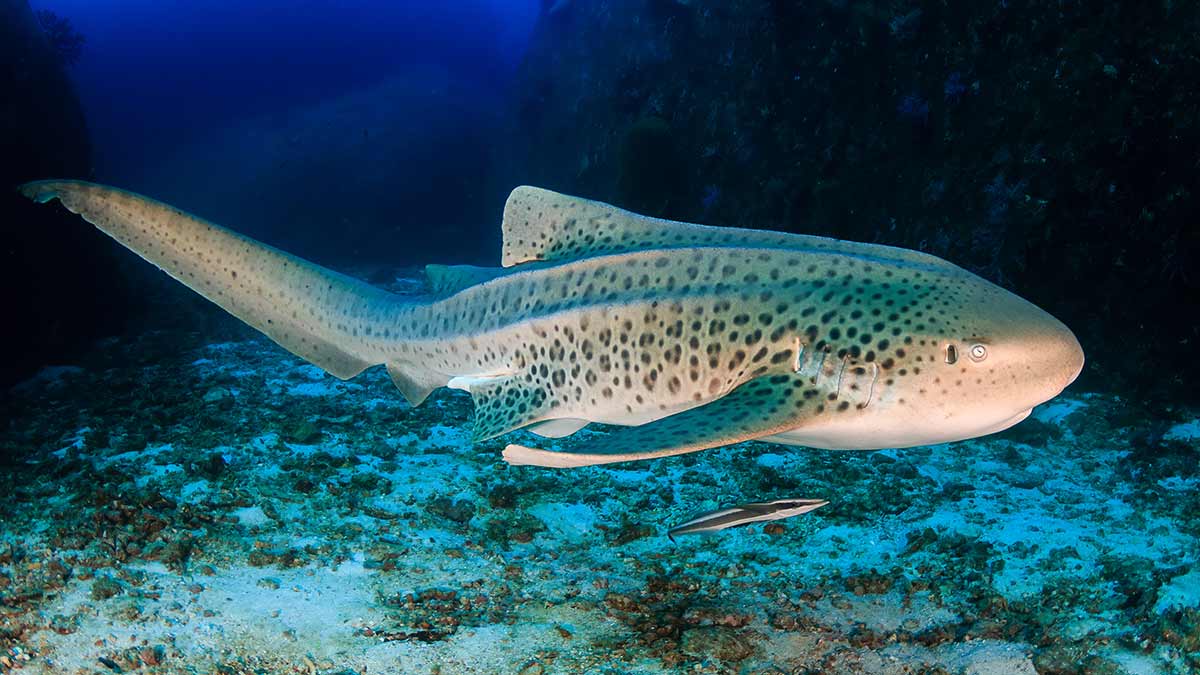
Zebra sharks are interestingly named, as they do not retain the characteristic stripes resembling a zebra past the juvenile stage. As they mature, the stripes disappear and all that is left is small, dark spots on a light background, with 5 raised longitudinal ridges along their back. This nocturnal bottom-dweller spends most of its days asleep, using the cover of darkness to hunt for small bony fishes, crustaceans, and mollusks. The zebra shark is oviparous, which means that it lays several dozen large egg capsules, attached to stationary surfaces by long, sticky tendrils. When the sharks hatch, the pouches sometimes wash ashore, where humans that have collected them over the years have named them “mermaid’s purses.” Zebra sharks are typically docile, but the no-touch rule definitely applies as they can react negatively to harassment.

